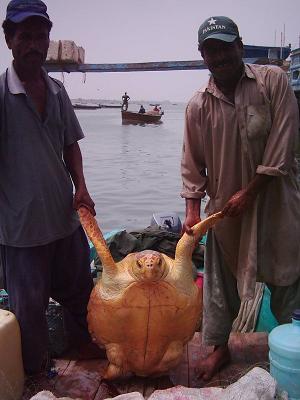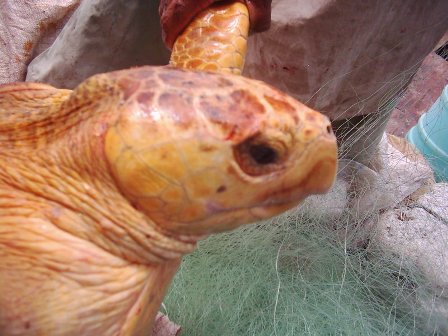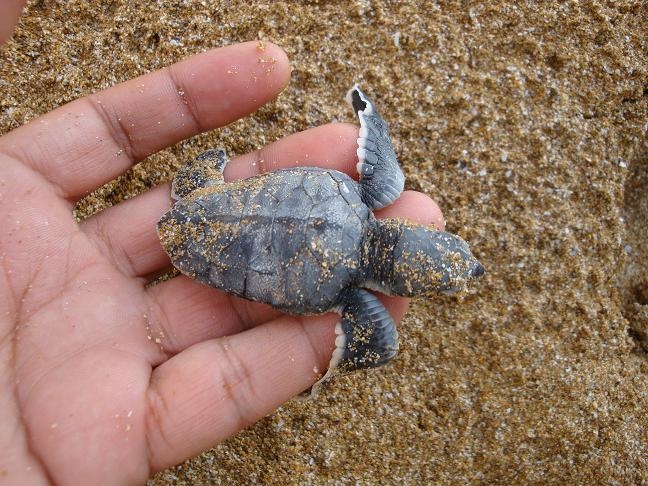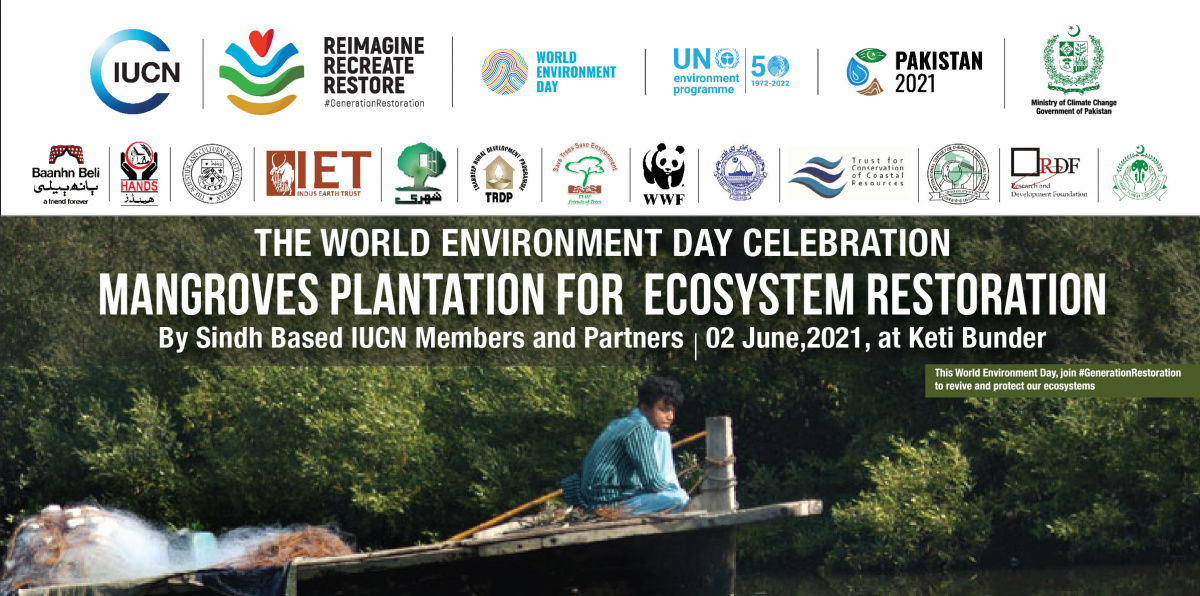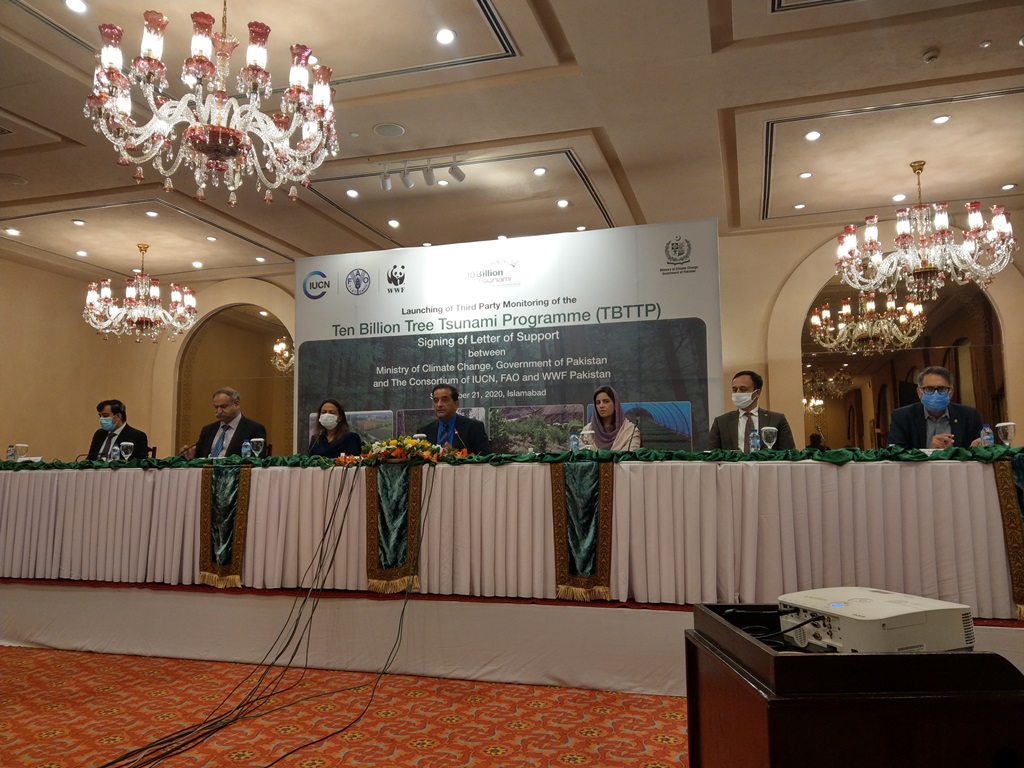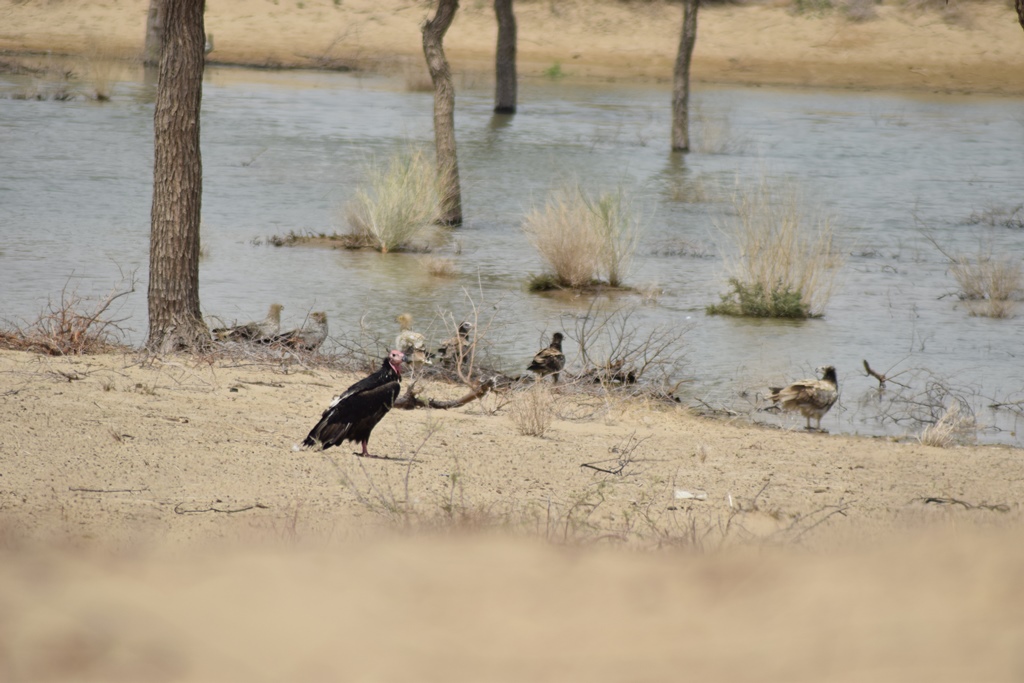Nesting of Loggerhead Turtles in Pakistan confirmed by renowned expert Nicolas Pilcher
KARACHI February 14: Renowned turtle expert Nicolas J Pilcher, who was in Karachi for a seminar on threats to the turtles in Pakistan has confirmed that a third species, the Loggerhead was also nesting on these shores.
Until now the only two species recorded nesting in the country were the green turtles (Chelonia mydas) and a smaller number of Olive Ridleys (Lepidochelys olivacea). By far the most widespread nesting is by the green turtle, from the eastern shores of Sindh Province all the way to the western shores of Balochistan.
Recent findings by the IUCN Pakistan team, under the auspices of the Balochistan Partnerships for Sustainable Development project, have documented a third species, the Loggerhead (Caretta caretta) nesting at Daran beach, some 11km SE of Jiwani.
Positive identification of the adults and hatchlings was made by Dr. Nicolas Pilcher, Co-Chair of the IUCN Marine Turtle Specialist Group, and a long time turtle researcher and conservationist. Some sixty nests were recorded during 2009, and the work will expand in the coming months to determine just how extensive this nesting is.
Loggerheads are known to nest in large numbers in Oman, on Masirah Island, and a small number nest in Yemen, but this is the first record of Loggerhead nesting in Pakistan. This latest discovery expands the nesting range for Loggerheads and raises their survival outlook, in a climate where critical nesting habitats are being rapidly eaten up by development. The discovery also boosts known diversity of wildlife in Pakistan.
Pakistan used to host substantial numbers of Olive Ridleys along the shores of the Sindh province, but most of these have ceased coming in to nest. Commercial fisheries are the main reason for this decline; with over 1900 active trawlers operating just offshore, turtles have been accidentally lost to fishing nets. Trawling for shrimp and fish is known as one of the major causes of sea turtle mortality.
Luckily for the Loggerheads, Sindh-based commercial fisheries do not generally operate as far away as the western end of Balochistan, so they have avoided the threats. Turtles can be saved from drowning in fishing nets through the use of Turtle Excluder Devices, which are clever adaptations to nets and allow fish and shrimp to enter the net and for turtles to escape through a special opening. IUCN intends to work with partners in the country to help introduce and promote TEDs so that fishing can have less of an impact on turtles. This may also result in the reappearance of the Olive Ridley turtles on our shores.
For the past several decades marine turtle conservation programmes have been underway in Pakistan. Most noticeable is the work undertaken in the Sindh Province, on Sandspit and Hawkes Bay, where thousands of turtles have been protected through hatchery enclosures.
For details please contact:
Afia Salam
Coordinator, Education, Communications and Outreach
IUCN-Pakistan
1, Bath Island Road
75530 Karachi
Pakistan
+92 21 5861540 (Work)
+92 21 5835760 (Fax)
Cells: 0300 9223019
0345-2006610
afia.salam@iucn.org
www.iucnp.org
About IUCN
IUCN, the International Union for Conservation of Nature, helps the world find pragmatic solutions to our most pressing environment and development challenges by supporting scientific research; managing field projects all over the world; and bringing governments, NGOs, the UN, international conventions and companies together to develop policy, laws and best practice.
The world's oldest and largest global environmental network, IUCN is a democratic membership union with more than 1,000 government and NGO member organizations, and almost 11,000 volunteer scientists and experts in some 160 countries. IUCN's work is supported by over 1,000 professional staff in 60 offices and hundreds of partners in public, NGO and private sectors around the world. IUCN's headquarters are located in Gland, near Geneva, in Switzerland.
